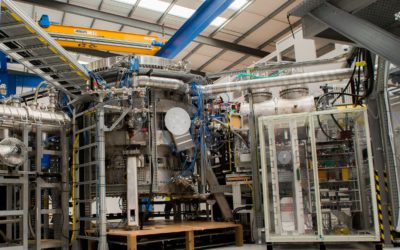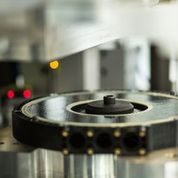Oxford PV is a perfect example of how Oxford and Oxfordshire are at the epicentre of the green recovery, yet its start-ups still need more government support to turn cutting-edge innovation into viable products.
Its innovative solar cell design extends the capabilities of today’s silicon cells which typically convert around 20 to 25% of light into energy from photons in the red part of the spectrum. By adding on top of a conventional silicon cell its patented layer, that absorbs photons from the blue part of the spectrum, Oxford PV can increase this efficiency to over 29%.
This will make PV panels built with the company’s PV cells the most efficient commercially available option, according to CEO, Frank Averdung. However, he expects to soon be able to boost this to around 33% as the company edges towards the theoretical limit of 43% when its technology is added to silicon solar cells which, on their own, have a theoretical limit of 29%.
The technology business refers to itself as “The Perovskite Company”. However, the mineral is not used in the layer it adds to silicon solar cells to absorb photons in the blue spectrum. Rather, the additional layer is made to resemble the crystal structure of the mineral perovskite, using readily available synthetic materials.
![]()
Premises support
The company expects to turn ten years of research and development into its first commercially available photovoltaic (PV) solar cells in 2021. However, despite the technology being developed in Oxford, the cells will be made in Germany.
Frank Averdung, was keen to set up a manufacturing facility in the UK but found business development agencies far less helpful here than in Germany. He claims it took several months for British regional business development agencies to respond to the company’s request for help in finding potential manufacturing sites. It took just a week for their German equivalents to set up visits to five potential locations and less than a year to help the business move into its new facility in Brandenburg, near Berlin.
“We didn’t want to go to Germany, we wanted to produce our panels in the UK but the British regional development teams made it so difficult and their German equivalents made it so easy,” he says.
“This is something where start-ups in the area are going to need a lot more support. Otherwise more will be tempted to take great technology like ours, that has been developed in Oxford, and produce it in another country where they are offered an attractive package on acquiring a production facility and tax breaks.”
Engineers needed
There is also an additional need for the education and vocational organisations within local and national government to create more engineers. For Averdung, there is a very clear issue in the UK for a city like Oxford to have world-leading scientists but suffer from a lack of engineers and manufacturing options to turn technology into commercial products.
“Oxford is great for scientists but, like the rest of the UK, needs engineers who can take a problem and find practical solutions,” he says.
“You’ve got the people here who can work on theory and what lies beyond our current knowledge, but not how to make it. You need both and I can see a self-fulfilling prophecy that because you don’t have enough engineers, young people just don’t think there is a career in engineering for them.”
About this case study - Powering up for the Green Recovery: Oxfordshire's role in building a cleaner future
Advanced Oxford would like to thank all of the companies that participated in this project for their time and for providing us with images which illustrate their technology and work. This case study was written by Sean Hargrave, working with Advanced Oxford.


